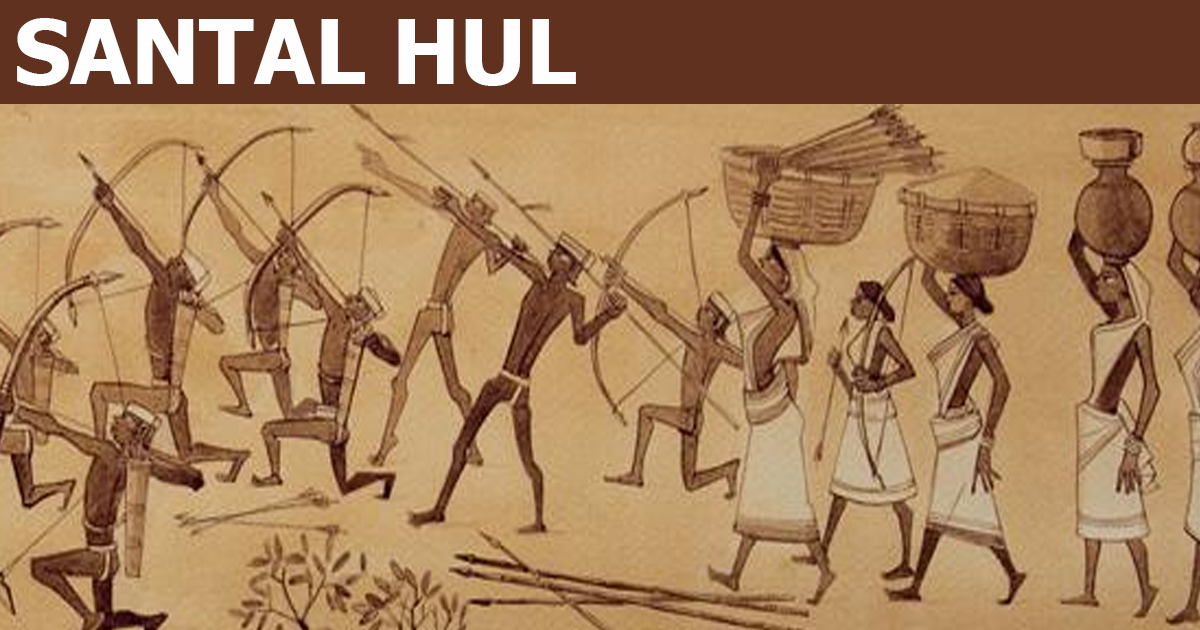
Context: In Jharkhand, June 30 is celebrated as Hul Diwas, commemorating the 1855 Santal rebellion led by Sido and Kanhu Murmu.
Causes of Uprising
- Revenue Policies: Following the Battle of Plassey in 1757, the East India Company implemented revenue and law-and-order policies to exert control over India.
- Permanent Settlement (1793): Introduced by Lord Cornwallis in Bengal, Bihar, and Orissa, this system granted landlords perpetual land rights provided they paid fixed revenue to the British.
- Impact on Santhals: When peasants couldn’t pay rent, tribal lands were auctioned off, resulting in a loss of control over their land and traditional systems.
- Damin-i-Koh (1832): The East India Company designated this area for Santhals, promising non-interference.
- Rising Rent: Increased demands from the British led to exorbitant rents.
- Economic Strain: The Santhals, who operated within a barter system, faced difficulties with cash payments, leading them to borrow money at high interest rates from moneylenders.
Rebellion
- On June 30, 1855, the Santhal revolt began, led by Sidhu, Kanhu, Chand, Bhairav, and their sisters Phulo and Jhano.
- Santhals, including farmers and women, formed troops, capturing parts of Rajmahal Hills, Bhagalpur, and Birbhum. Over 10,000 Santhals organized militarily, destroying storehouses and disrupting communication.
- With support from landlords, the British deployed heavy weapons to suppress the revolt. Sidhu and Kanhu were arrested, and the rebellion concluded in 1856.
Outcome
- The Santhal rebellion was harshly suppressed, ending with significant loss and suppression of the Santhal people.
- The Santhal Pargana Tenancy Act of 1876 was enacted to prohibit the transfer of Adivasi lands to non-Adivasis, ensuring that land can only be inherited, thus maintaining Santhal self-governance over their land.
- The Chhotanagpur Tenancy Act of 1908, arising from the Birsa Movement, restricts the sale of Adivasi and Dalit lands, permitting land transfers within the same caste. In certain areas, with District Collector approval, Adivasi land transfers within the same police station and Dalit land transfers within the same district are allowed.




